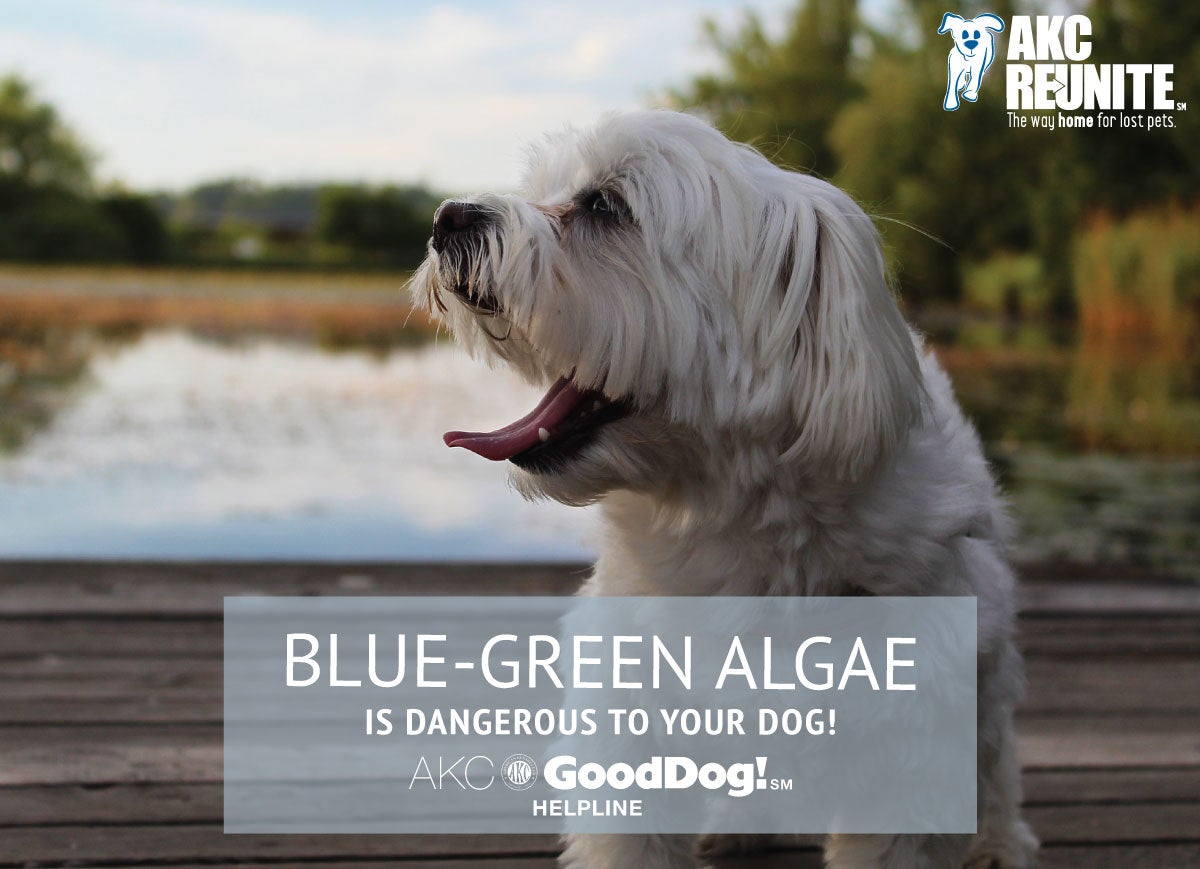Dog Swimming Alert – Be Aware of Blue-Green Algae Toxicity
Brought to you by the AKC GoodDog! Helpline – the AKC’s 7-day-a-week training support service
By Erin Rakosky DVM
The weather is getting warmer, making it more enjoyable to get outside with our dogs. But with the warmer weather come some hidden dangers.
One of these is cyanobacteria, also known as blue-green algae. Cyanobacteria is found during the warmer months in bodies of water and is typically fatal if ingested. Blue-green algae blooms usually occur in standing water that receives a lot of direct sunlight.
Nutrient dense water runoff from fertilizers and animal waste flows into ponds, rivers and lakes and helps create the perfect environment for the algae blooms to form. The blooms can be spotted, usually along the shoreline, and they have the appearance of spilled paint on the surface of the water.
It takes just a small amount of this toxin to cause devastating effects in our pets. It can be accidentally ingested while swimming or even taken in by licking wet fur that has been contaminated with the algae. Signs of cyanobacteria toxicity can start as soon as 30 to 60 minutes after ingestion.
The type of signs depend on which toxins are ingested. Microcystins, one of the toxins produced by blue-green algae, cause severe damage to the liver. Anatoxins, also contained in these algae, cause damage to the nervous system.
Signs that can mean your pet is in danger include vomiting, diarrhea, excessive drooling, tremors, seizures and disorientation. If you suspect your pet may have been affected by blue-green algae, it is important to get them to a veterinarian immediately. Even with aggressive treatment, the prognosis for blue-green algae toxicity is poor. Some animals may even pass away on the way to seek emergency care.
Because of how dangerous this toxin is, the best cure is prevention. DO NOT let your pet swim in waters contaminated with blue-green algae. Not all algae blooms are dangerous, but it can be hard to distinguish which ones are.
The best practice is to avoid water with any algae blooms at all. If there are bodies of water at your home that may be contaminated, fence them off to prevent your pet from reaching them. Also, do not let standing water sit in pots, bird baths and fishponds; these can also harbor the dangerous organism. With these precautions, both you and your dog can safely enjoy the outdoors this summer!
For more tips and advice on training your dog, join the AKC GoodDog! Helpline, a seven-day-a-week telephone support service staffed by experienced dog trainers: www.akcgooddoghelpline.org.
RELATED POSTS
How to Curb Open Door Darting
How to Curb Open Door Darting Brought to you by the AKC GoodDog! Helpline – the AKC’s 7-day-a-week training support service By: Hilarie Erb We have done a good job of teaching our dogs [...]
Thunderstorm Terror and Helping Your Dog Cope
Thunderstorm Terror and Helping Your Dog Cope Brought to you by the AKC GoodDog! Helpline – the AKC’s 7-day-a-week training support service By: Hilarie Erb April showers might come with thunder, and while most [...]
Stop the Leash Pulling on Walks
Does your dog’s relentless tugging make it impossible to enjoy a walk? Poor leash manners are one of the most common issues that AKC GoodDog Helpline trainers are asked about. But don’t despair; there are ways you can make it better.





